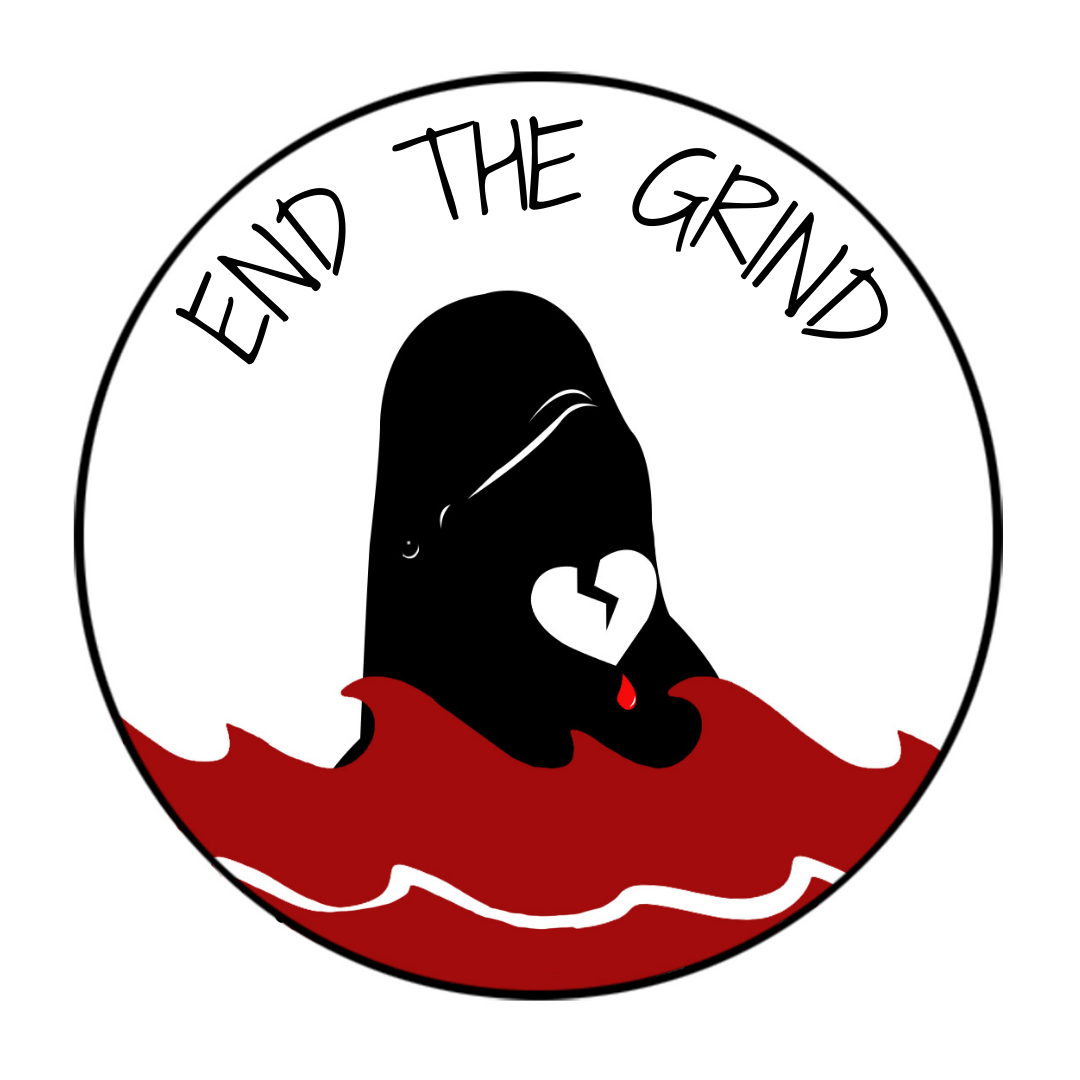Definition
WHAT IS THE GRIND?
o-
Reported for the first time in 1584 but brought by the Vikings as early as the 10th century, the Grind (or Grindadrap) is the hunting of small cetaceans practiced by the inhabitants of the Faroe Islands. The species most targeted by this hunt is the pilot whale (Globicephala melas).
When whales are spotted close to land, the hunt begins. The hunters first surround the pilot whales with a wide semicircle of boats. The boats then take the pilot whales to an authorized bay or the bottom of a fjord, where the kill takes place. It is not permitted to capture whales on the ocean side of the rope.
In the past, pilot whales that were not beached were often stabbed in the blubber before being brought ashore.. But after allegations of animal cruelty, Faroese whalers began using blunt hooks (Faroese: blásturongul) to pull whales ashore by their blowholes. The new hook is supposed to be more humane than the old one, but anti-whaling groups such as Greenpeace and the Whale and Dolphin Conservation Society (WDCS) confirm that the partial blockage and irritation of the airways injures and panics the whale.
Once on land, the pilot whale is killed by cutting through the dorsal area down to the spinal cord with a special knife (a mønustingari). The whale's neck is cut open so that as much blood as possible can drain away to obtain the best meat quality.
Today, the mønustingari is the only weapon authorized for killing a whale. The average time taken to kill a whale is 30 seconds, but other observers have complained that it can take up to 15 minutes(some whales were not killed properly until a vet had finished the job). With the new law prohibiting whalers from stabbing whales from boats, this should no longer happen !
Under the new whaling law (Grindalógin), whales may only be killed from the shore, which means that men don't hunt the pilot whales with their boats anymore, but men wait for them on the beach.
WHY DOES IT STILL PERSIST?
This hunt was once used to feed the population of the archipelago, which was completely isolated from the rest of the world. Because of the difficult climate, the production of livestock and agriculture is very limited on the archipelago and pilot whale meat was then a very appreciated source of food.
But what was once subsistence hunting continues today under the cloak of tradition, while the Faroese have one of the highest standards of living in Europe, and eating pilot whale meat carries proven health risks.
A HIGHLY CONTROVERSIAL HUNT
This hunt not only poses serious ethical problems but also raises serious public health concerns due to the toxicity of pilot whale meat.
In the North Atlantic, the pilot whales are at the top of the food chain and therefore store many pollutants and heavy metals in their bodies.
In 2010, with his documentary Féroé lʼarchipel blessé, ethno-cetologist, director, photographer and writer François-Xavier Pelletier uncovered underwater mass graves, proving de facto that pilot whale meat is hardly ever consumed.
The Faroese who defend this hunt do so because of cultural and traditional reasons.
THE FAROE ISLANDS
This autonomous archipelago is under Danish protectorate. Pilot whales are classified as "strictly protected" by the Berne Convention on the Conservation of European Wildlife and Natural Habitats,becausethey are on the list of threatened species of the Convention on International Trade in Endangered Species of Wild Fauna and Flora(CITES).
Therefore, by allowing the slaughter to continue in the Faroe Islands, Denmark is in breach of its commitments as a signatory to the Bern Convention.

François Xavier Pelletier was the first to talk about this underwater massacre and to work with the local population. A documentary has been made on this subject. You can find the synopsis here.
